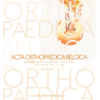How can postoperative shoulder imbalance be prevented in adolescent idiopathic scoliosis type 2?
Shoulder elevation; spinal deformity; posterior spinal fusion; level shoulder; frontal alignment
Published online: Jan 20 2023
Abstract
Postoperative shoulder imbalance (PSI) is a common complication following adolescent idiopathic scolio- sis (AIS) surgery. There is little data available in literature on prediction of PSI. Prospectively collected data of AIS with thoracic curve (Lenke 2), operated in 2014-2018 at a single scoliosis-center, were analyzed retrospectively using X-rays of whole spine and traction films (TA): age, Cobb-angle of proximal (PC), major thoracic (MC) and lumbar curve (LC), shoulder height [mm], clavicle angle [°], T1-tilt [°], plumb line [mm]. Results as mean ± standard deviation. Change over time (postOP- FU) compared using t-test (≥=0.05). Correlation of preOP parameters and curve correction with PSI (|≥|15mm) was analyzed by correlation (Pearson)- and regression-classification-analysis. 32 AIS, average age of 14±1.3 yrs. FU 16 months (84%). Curve correction was 52.5% (PC), 70.1% (MC), 69.9% (LC), significant change in FU for PC (-2.4°, p>0.05), not for MC, LC (p=0.2, p=0.6). Shoulder height was negative if right- side up: 2.9±15.1mm (preOP), 5.5±15.0 mm (TA), 17.9±14.9mm (postOP), 17.4±8.4mm (FU). 28% had preOP shoulder imbalance, 69% postOP and 44% FU had PSI. Shoulder height on TA correlated to change preOP to FU (r=0.62) and preOP shoulder height (r=-0.85), clavicle angle had strong correlation (r=- 0.81). Regression-classification-analysis: correction of MC>62.4%, 81.5% of cases had PSI; with correction of MC>64.9% and LC>93.2%, 51.9% of cases had PSI. PSI is a common in Lenke2 AIS. In preOP planning TA, shoulder position and clavicle angle should be considered to prevent PSI. Correction of MC should be moderate, overcorrection of the LC avoided.
